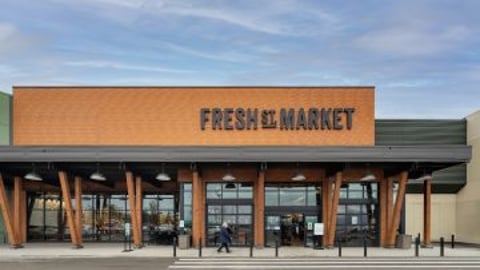Navigating the in-store experience post-COVID
The in-store experience will become even more relevant as the economy continues to open following COVID-19 restrictions and Canadians flock back to their favourite local restaurants.
During a conference session at SIAL Canada in Montreal on Thursday morning, a panel of industry experts discussed the role of bricks-and-mortar grocery in a post-pandemic world. They all agreed grocers must stick to their values to keep customers coming through their doors.
COVID forced Canadians to reset, said Mary Dalimonte, an industry veteran and a 2017 Star Woman in Grocery. They cooked more, they baked more, they spent more quality time with family, and some of these new habits are here to stay, she said. “That means bricks and mortar has to be more relevant … It’s going to have to be more experiential and true to what [they] stand for.”
Dalimonte said she saw an opportunity for grocers to partner with well-known foodservice brands to create relevant in-store experiences including store-in-store restaurant concepts.
She used sushi stations as one example. Years ago this may have seemed an off-the-wall idea, but now it has become a mainstay in Canada’s grocery stores, she said. Grocers need to be willing to take these kinds of risks to create a more compelling and immersive shopping environment and to differentiate themselves from the competition.
But who should grocers partner with? The pandemic created a movement to help support local businesses, said Montreal-based food writer JP Karwacki, and grocers can capitalize on this. “Don’t create a Benihana inside [the grocery store],” he said. “It should have that element of feeling close to consumers and supporting someone real.”
Moderated by Dana McCauley, chief experience officer at the Canadian Food Innovation Network, Dalimonte and Karwacki were joined on the panel by Michael LeBlanc, a senior retail advisor with RCC and the host of The Retail Voice podcast.
LeBlanc said he is watching the “moderation” of e-commerce sales and a return to bricks and mortar shopping in the United States, a trend that could impact the Canadian market as well.
“The reality, though, is talking about store retail and e-commerce is becoming more and more a difference without a distinction, it’s all commerce,” he said.
He used the example of U.S. retail chain Target, which fills, ships and delivers the majority (96%) of its online orders from its stores and has recently focused more of its efforts on its curbside pickup service.
To enhance that offering and differentiate it from the competition, Target consumers can now add a Starbucks coffee to their curbside order. It was a feature customers had asked for, said LeBlanc, and Target is making it happen.



